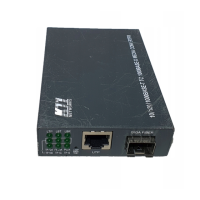-35-
QoS Control Description
QoS 802.1p 802.1p priority classification
Enable - set to enable this classification to the port for priority-tagged and
VLAN-tagged packets
Disable - 802.1p classification is not applied to the port
QoS DSCP DSCP classification
Enable - set to enable DSCP classification to the port for IP packets
Disable - DSCP classification is not applied to the port.
QoS Default Priority Default priority class, it is used when 802.1p and DSCP classifications are
disabled. It is also used as default priority class for the received packet
when both 802.1p and DSCP classification failed in classification.
Class 3 ~ Class 0 - priority class
QoS Egress Service Service policy for egress priority among four egress class queues
Strict priority - high class queue is served first always till it is empty
Ratio 4:3:2:1 - Weighted ratio priority Class 3:2:1:0 = 4:3:2:1
Ratio 5:3:1:1 - Weighted ratio priority Class 3:2:1:0 = 5:3:1:1
Ratio 1:1:1:1 - Weighted ratio priority Class 3:2:1:0 = 1:1:1:1
[802.1p Mapping] Click to configure 802.1p mapping tables.
[DSCP Mapping] Click to configure DSCP mapping table.
[Apply] Click to apply the configuration change
[Refresh] Click to refresh current configuration
Notes:
1. 802.1p classification is superior over DSCP classification if both are enabled. That means
if a received packet is classified successfully in 802.1p classification, the classified priority
class is used directly for the packet and the result of DSCP classification is ignored.
2. Queue with higher class number has higher priority than queue with lower class number.
That means Class 3 > Class 2 > Class 1 > Class 0 by default.
3. In weighted ratio policies, a weighted fairness round robin service is guaranteed normally.
However, when excess bandwidth exists higher class queue will take advantage on band-
width allocation.
4. It is suggested to apply QoS Control function only on 1000M to 100M conversion. Under
1000M to 1000M full wire speed conversion, the effect of QoS control function is not
obvious.
5. The function of all three [Apply] buttons are identical. Click any one to apply the change.
6. The function of all three [Refresh] buttons are identical. Click any one to refresh settings.

